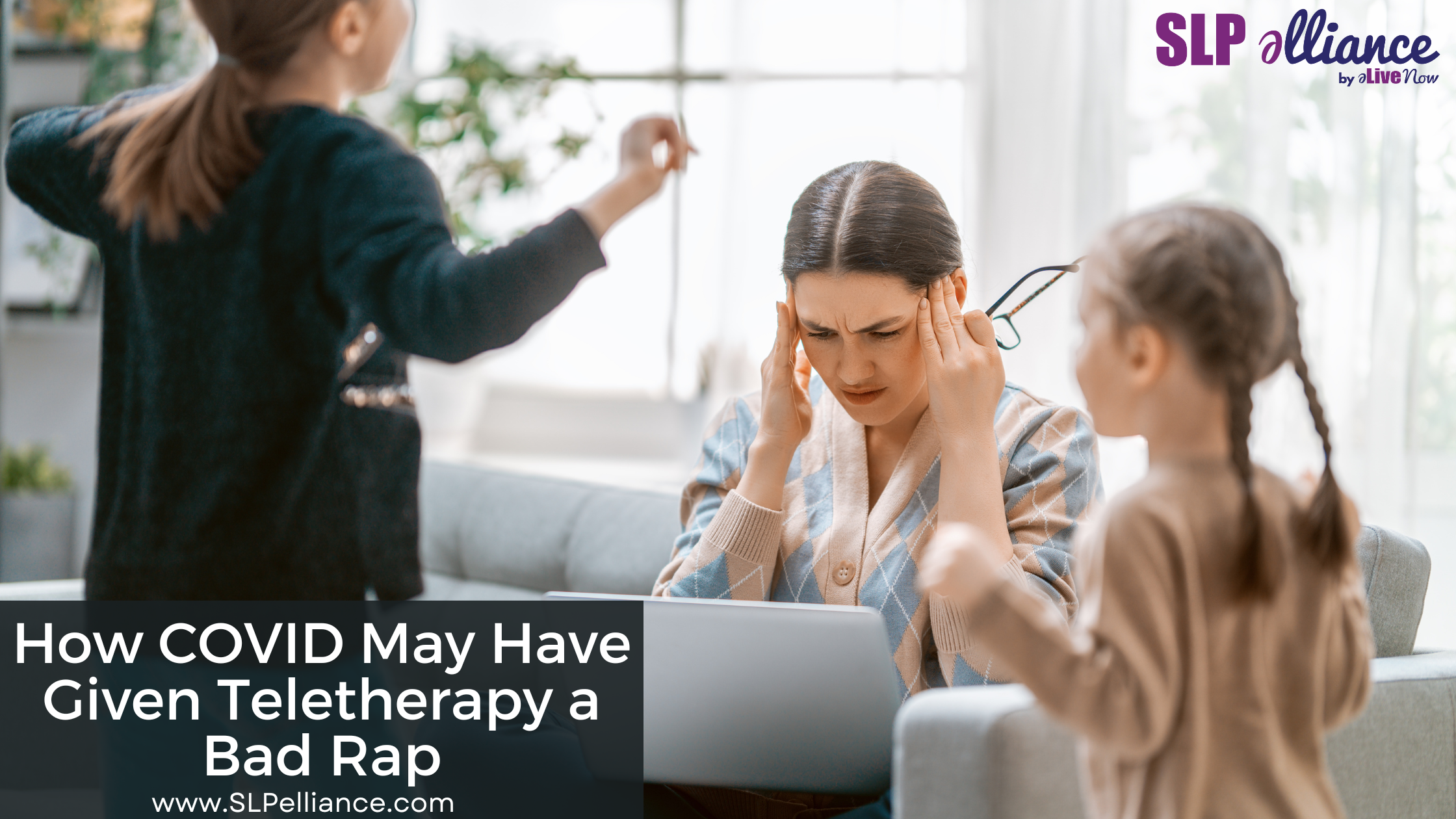Teletherapy has been around for well over a decade, but speech-language pathologists didn’t necessarily take it seriously as a career option until it was forced on them during the COVID lockdown. I feel very fortunate that I already had my foot in the door in the teletherapy world before quarantine- but I’ve also felt incredibly frustrated by the negative reviews I’ve heard from people who were forced into it with little to no training. Here’s the thing- of course, something is going to fail if you are:
- Given no support as to how to get started
- Not excited by the idea and therefore unmotivated to learn
- Working with individuals who may not be (in your opinion) appropriate for this setting
- Logging in and the clients are not
- Struggling working with families/staff who aren’t holding up their end of the deal
All of that happened during COVID- even to me, a veteran teletherapist. However, I knew WHY it was happening. It was a stressful time for the entire world. School closures meant parents were home with the kids and they were all out of their regular routine. Many of our clients developed or increased their instances of negative behavior. Parents and staff less familiar with technology struggled to log into Zoom sessions. Parts of the country had difficulty with reliable internet connections. Overall, there was a general sense of confusion as to how to provide sufficient services for these students among those being serviced, parents, and staff. That is why (for the most part) teletherapy may have seemed like a failure.
However, there are more success stories than not. I felt so fulfilled treating students who would have otherwise missed sessions for an entire school year. I was thrilled to meet people from the other side of the country and learn their story. It was an honor to be that person on the other end of a Zoom call who would listen and engage with students who otherwise felt alone or unsupported during that crazy time in all of our lives. The year after the lockdown, schools felt like they were drowning in make-up minutes for those who were supposed to be getting therapy and teletherapists were able to jump in and “save the day”.
There are dozens of other reasons I am proud to be a teletherapist and (for lack of better words) preach to my fellow in-person SLPs the benefits of this form of service. I’ll turn that into a post for another day. Just know that the complaints about how things went down during COVID don’t accurately represent the success this platform can achieve- the circumstances sabotaged them. Try to remind others of that when they say, “Oh, teletherapy didn’t work for us,” as it was either that or no service at all (and just think of how much worse off these students would have been).
If you are communicating with families or schools that are still hesitant to use teletherapy, here is a guide to overcoming those objections.

